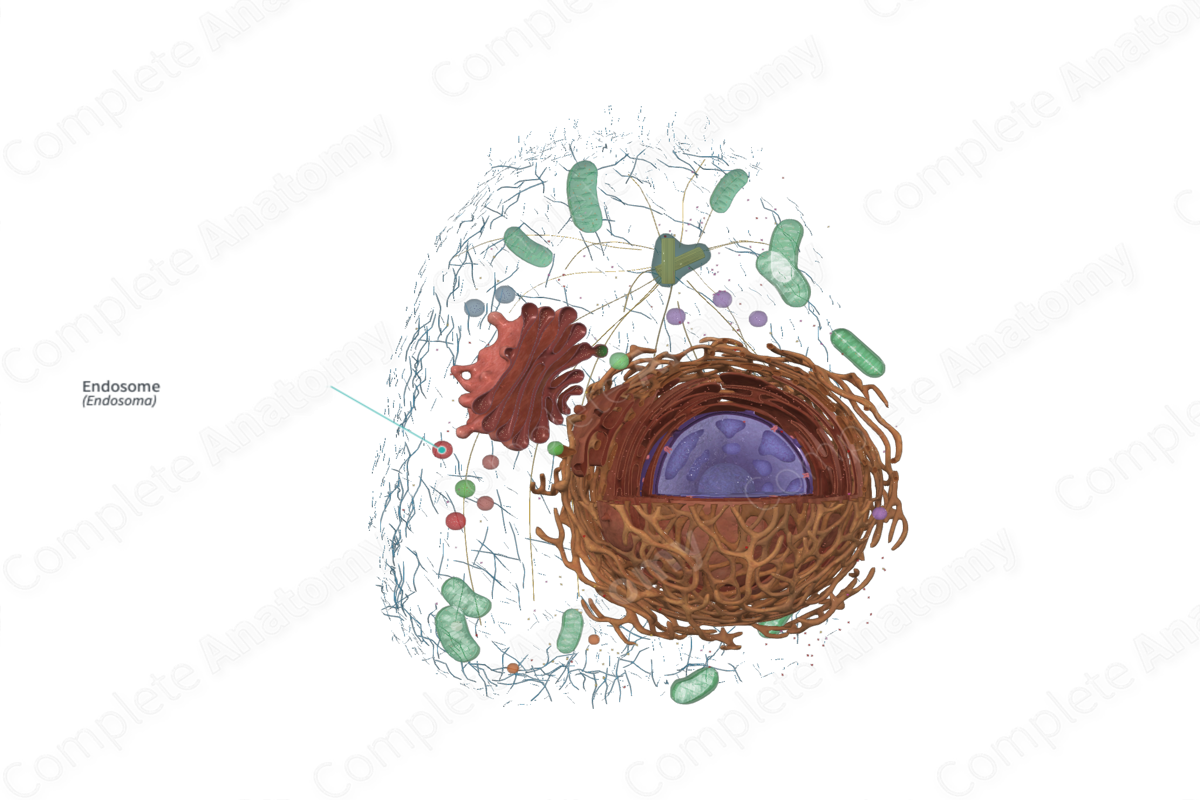
Quick Facts
In endocytosis, an endosome is a vesicle that has lost its coat of clathrin. Four classes of endosomes (early, recycling, and late endosomes and multivesicular bodies) are distinguishable; whether they are distinct organelles or functional subsets of a single compartment is uncertain (Dorland, 2011).
Structure and/or Key Feature(s)
Endosomes form a system of vesicles (early endosomes) within the cytosol near the cell surface and are a result of fusion of vesicles originating by endocytosis from the plasmalemma. Clathrin-coated vesicles fuse with endosomes. These early endosomes recycle some of the plasmalemma components back to the cell surface, particularly clathrin to form new coated pits, then proceed to go deeper into the cell with other endosomes to become late endosomes.
Some endosomes are functionally connected to the transport vesicles in the rough endoplasmic reticulum (and most likely the Golgi complex) to deliver hydrolytic enzymes to late endosomes that carry a mannose-6-phosphate (M-6-P) receptor. These are endosomes destined to be lysosomes (Ross and Pawlina, 2006).
Function
Early endosomes transport and sort proteins received by endocytosis and direct them to appropriate cellular compartments. Late endosomes are lysosomes (Ross and Pawlina, 2006).
References
Dorland, W. (2011) Dorland's Illustrated Medical Dictionary. 32nd edn. Philadelphia, USA: Elsevier Saunders.
Ross, M. H. and Pawlina, W. (2006) Histology: A text and atlas. Lippincott Williams & Wilkins.
